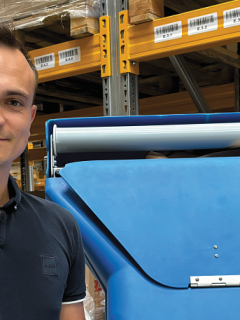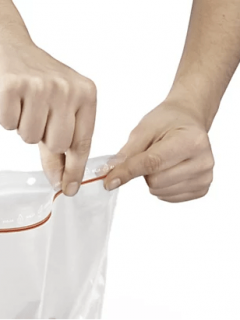Banding is one of the most commonly used methods for securing loads on pallets. With the right choice of strapping and tools, products can be effectively immobilised, protecting them from movement and damage during transport or storage. What types of banding are there and how to perform the process correctly? You will find out all about it in this article.
Bundling – what does it mean?
Pallet banding is the process of strapping loads with special bands that hold the goods in a stable position. Different types of strapping are used (e.g. polypropylene, polyester, steel), as well as tools such as manual and automatic strapping machines and strapping tensioners. Banding can be applied to both individual parcels and entire pallets, ensuring the safety of products during transport and storage.
For what purpose is pallet banding performed?
Pallet banding performs several key functions that affect the quality and safety of the goods being transported. This is primarily:
- Load stabilisation – banding prevents goods from moving around on the pallet, minimising the risk of tipping or damage,
- Protection against spillage – in the case of loose or non-standard loads, banding helps to keep them together,
- Increased transport safety – well secured cargo reduces the risk of accidents during transit,
- Space saving – by bundling products tightly together, storage and transport space can be used more efficiently,
- Easier logistics – banded pallets are easier to move and handle.
Also check if you know how to ensure the stabilisation of parcels and pallets.
What types of strapping can be distinguished?
Depending on the type of goods and the strapping used, different types of banding machines are used. They can be divided into several categories:
- Manual banding machines – these are the simplest devices, often used in smaller companies and warehouses. They require manual tensioning of the strap and its fastening using clips or a clamping system,
- Battery operated b anding machines – semi-automatic machines that speed up the banding process considerably. They tension, seal and cut the tape by themselves, which makes the work easier,
- Pneumatic banding machines – run on compressed air for precise and fast strapping. They are particularly useful in large production facilities,
- Automatic banding machines – used on production lines where the banding process is fast and repeatable. Such machines take the tape by themselves, wrap the load, seal the tape and cut off the excess.
How do I use a strapping machine?
To perform banding effectively and safely, it is important to use the pallet banding machine correctly. The process varies depending on the type of machine.
How do I use an automatic banding machine?
To use an automatic banding machine, place the load in the correct position on the machine’s work table. Then simply start the machine, which automatically takes the strap and wraps it around the load, tightens and seals or closes it with clips.
The process is fast and repeatable, allowing a large number of pallets to be efficiently banded in a short period of time. Depending on the model of the machine, the parameters of the strap tension and the way in which it is joined together can be adjusted, allowing different types of loads to be optimally secured. Regular maintenance of the machine will ensure a long service life and smooth operation.
How do I use the hand strapping machine?
To use a hand strapping tool, the strap is first prepared by cutting it to the correct length and placing it around the load. Next, both ends of the strap need to be passed through the banding machine according to the manufacturer’s instructions. The next step is to manually tighten the strap using the tensioning lever of the banding machine – it should fit snugly to the load, but not damage it.
Once the strap is taut, it should be fixed using a pin for steel straps or a clamping mechanism for plastic straps. The final step is to cut off the excess strap so that it does not interfere with further transportation.
What do I need to consider when banding?
For effective strapping and to ensure maximum safety for the load being transported, there are a few rules to follow:
- Selection of the right type of strap – the material and width of the strap should be matched to the type and weight of the load,
- The right strapping tension – a strap that is too loose will not do the job and a strap that is too tight can damage products, so it is worth using a strapping tensioner,
- Use of protective corners – for delicate goods it is worth using corners to prevent damage caused by the pressure of the strap,
- Regular maintenance of tools – an efficient banding machine ensures that the process is carried out quickly and efficiently, so it is worth checking the condition of your banding kit regularly,
- Safe use – follow the instructions for use and take care when working, especially when using steel strapping.
Pallet strapping is a key process in logistics and transport that affects the stability and safety of loads. By choosing the right method and tools, goods can be effectively secured and losses can be avoided during storage and transport. It is also useful to know how to secure goods to a pallet.














